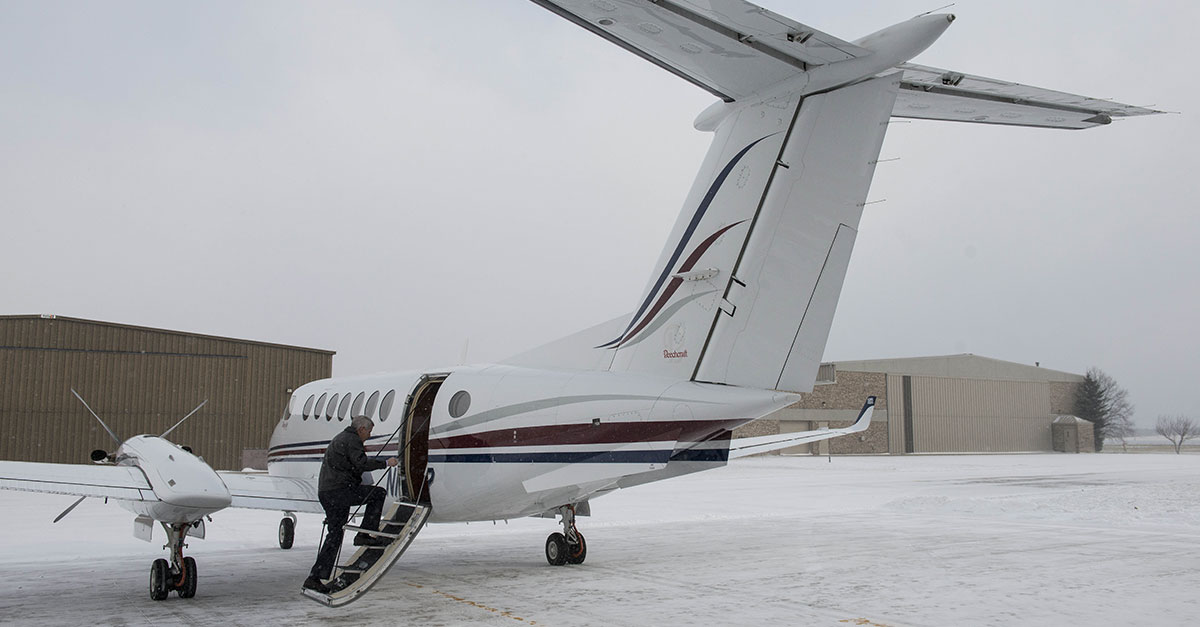
Nov. 10, 2010

TIPS & TOOLS
Aircraft icing is a complex topic that even the most seasoned flight department staff should stay abreast of. At two well-attended regional safety days sponsored by NBAA and local aviation groups in October – one at New Jersey’s Teterboro Airport (TEB) and the other at Hanscom Field (BED) in Massachusetts – aviation personnel participated in a seminar on ground icing, inflight icing and deicing procedures.
The TEB event was co-sponsored by the Morristown Aviation Association, Teterboro Users Group and Westchester Aviation Association. The BED session was co-sponsored by the Connecticut Business Aviation Group and Massachusetts Business Aviation Association. NBAA’s Dean Saucier, northeast regional representative, helped facilitate the programs.
Dr. Judith Foss Van Zante, an icing specialist with Sierra Lobo, Inc. at NASA’s Glenn Research Center, reminded attendees that inflight icing can cause not only performance degradation, but handling anomalies as well.
Structural icing can increase drag and reduce lift, which may manifest as either a reduction in airspeed or a need to increase thrust in order to maintain airspeed, an increased stall speed and/ or a reduced rate of climb. Also, an ice contaminated wing stall can cause either a roll or pitch upset. Additionally, there have been a number of ice-contaminated tail stalls that have resulted in a nosedown pitch. Van Zante says pilots need to remember that an aircraft affected by ice is flyable and controllable, but in a reduced speed range.
Van Zante encouraged pilots to understand and develop their “outs,” both during preflight planning and by requesting weather updates during flight, and to closely monitor the aircraft when flying in potential icing conditions – in clouds or precipitation with temperatures between +2 Celsius and -20 Celsius. If in icing, activate the aircraft’s ice protection system as directed by the airplane flight manual or pilot operating handbook. If in moderate to severe icing, attempt to exit the icing conditions – climb, descend, divert, return to home base – whichever is best based upon flight conditions, the aircraft’s practical ceiling, minimum safe altitudes in the area and instructions from air traffic controllers. Also, periodically hand-flying the aircraft will alert a pilot to cues of an impending wing or tail stall.
Walter Randa of Leading Edge Deicing Specialists emphasized that a decision to proceed with a flight must be based on confirmation that no frost, ice or snow is adhering to the wings, control surfaces, propellers, etc. “Fine particles of frost or ice the size of a grain of table salt and distributed as sparsely as one per square centimeter over a wing’s upper surface can destroy enough lift to prevent an airplane from taking off.”
Randa noted that symmetrical application of de-icing fluid is important, and ground personnel must provide information to the pilot on:
- Type and brand name of fluid used,
- Percentage of fluid in the mixture,
- Time that final de-icing/anti-icing began,
- Results of the check conducted after de-icing/anti-icing.
Randa said that the leading and trailing edges of the wing closest to where the application began will fail first, and that a fluid is losing its effectiveness when a surface begins to change from a smooth, clean, wet one to a slushy snow or ice-covered one.


 International Business Aviation Council Ltd.
International Business Aviation Council Ltd.